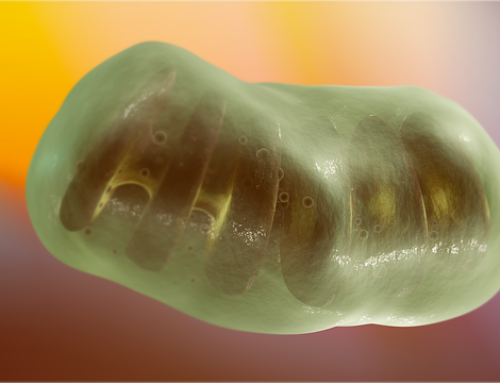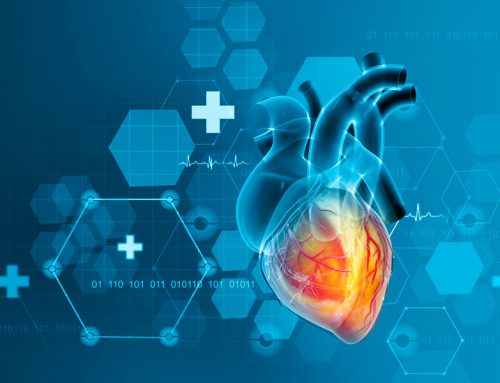Coenzyme Q10 deficiency? Coenzyme Q10 insufficiency? Is sub-optimal or deficient CoQ10 status a problem? What are the underlying causes? Given what we now know about the importance of an adequate supply of Coenzyme Q10 to good heart health and to longevity, these are important questions.

In 2018, the long-time CoQ10 researcher, Dr. William Judy, published his guide to clinical studies of the absorption and bioavailability, the clinical efficacy, and the safety of supplementation with Coenzyme Q10. The book is available from amazon.com. ISBN: 978-87-7776-186-7.
We now have good evidence from randomized controlled trials that supplementation with Coenzyme Q10 or with Coenzyme Q10 combined with selenium reduces cardiovascular mortality by nearly 50% in patients with heart failure and in community living senior citizens, respectively. In the same way, CoQ10 supplementation is associated with improved glycemic control and vascular function in type 2 diabetes patients, improved renal function in chronic kidney disease patients, and reduced liver inflammation in non-alcoholic fatty liver disease. Coenzyme Q10 has bio-energetic, antioxidant, and anti-inflammatory properties. As such, it has beneficial effects in the prevention and treatment of degenerative diseases that affect longevity [Mantle & Hargreaves 2019].
Basically, the following conditions come to mind as causes of an insufficient supply of Coenzyme Q10. In this article, we will take these conditions in turn and will see how they affect the supply of Coenzyme Q10 from the blood to the tissues and organs of the body.
- Aging-related decline in the cells’ CoQ10 biosynthesis process
- Less than optimal absorption and bioavailability of Coenzyme Q10
- Drug-induced depletion of Coenzyme Q10
- Mitochondrial disorders
- Mutations in genes for the biosynthesis of Coenzyme Q10
Aging-Related Decline in the CoQ10 Biosynthesis Process
The biosynthesis of Coenzyme Q10 is a complex process that requires the involvement of at least 13 genes as well as several amino acids, vitamins, and trace elements as precursors and cofactors. Deficiency of any of these components can adversely affect the CoQ10 biosynthesis [Mantle & Dybring 2020].
Optimal human biosynthesis of Coenzyme Q10 takes place in the mid-twenties. Thereafter, there is a continual gradual decline in tissue CoQ10 concentrations, also in healthy adults. In one study, the concentration of Coenzyme Q10 in heart muscle tissue declined as follows [Kalen 1989]:
- 19-21 years old: 110 micrograms of Coenzyme Q10 per gram of wet tissue
- 39-43 years old: 75 micrograms of Coenzyme Q10 per gram of wet tissue
- 77-81 years old: 47 micrograms of Coenzyme Q10 per gram of wet tissue
Moreover, researchers have observed that CoQ10 levels are depleted in patients with heart disease [Mantle & Dybring 2020]. As people get older, nutritional supplementation with a properly formulated CoQ10 product is necessary to maintain adequate CoQ10 levels in the cells and tissues. It is not possible to make up the loss by eating more food or eating more wisely [Judy 2018].
Inadequate Absorption and Bioavailability of Coenzyme Q10
First of all, variations in the composition of CoQ10 supplements may result in significant differences in the absorption and retention of exogenous Coenzyme Q10 [Hernandez-Camacho 2018]. The 2019 clinical study conducted by Lopez-Lluch et al has shown that absorption and bioavailability vary according to differences in the manufacturing process [Lopez-Lluch 2019; Mantle & Dybring 2020]:
- differences in the CoQ10 crystal dispersion status
- differences in the types of carrier oil
- differences in the composition of other excipients
- differences in CoQ10 oxidation state
It is very important to buy a CoQ10 product with documented absorption and efficacy. Anything else could be a waste of money. The composition of commercially available CoQ10 supplements varies considerably [Mantle & Dybring 2020].
Secondly, the Lopez-Lluch study showed that the bioavailability of Coenzyme Q10 varies significantly from one individual to the next. Lopez-Lluch et al concluded that the intestinal absorption of Coenzyme Q10 varies considerably among individuals, regardless of the form of the CoQ10 supplement, i.e., whether it is ubiquinone or ubiquinol [Mantle & Dybring 2020].
Drug-Induced Depletion of Coenzyme Q10
Statin medications inhibit not only the biosynthesis of cholesterol. They also inhibit the biosynthesis of Coenzyme Q10. Coenzyme Q10, in its two redox forms, ubiquinone and ubiquinol, is important for the generation of ATP energy and for antioxidant defense against oxidative damage. It is possible that statin-induced insufficiency of Coenzyme Q10 leads to impaired ATP generation and increased cellular damage. These adverse effects of statin medications may be a major cause of damage to the heart muscle and the coronary arteries [Okuyama 2015].
Similarly, bisphosphonate therapy to treat bone fragility disorders has been associated with compromised CoQ10 status [Kalyan 2014].
Primary and Secondary Coenzyme Q10 Deficiency
CoQ10 researchers divide CoQ10 deficiency into two categories: primary and secondary. Primary CoQ10 deficiency is relatively rare. It is secondary CoQ10 deficiency that is the bigger problem. Fortunately, oral CoQ10 supplementation can resolve several secondary CoQ10 deficiency conditions [Mantle & Hargreaves 2019; Mantle 2022].
Primary CoQ10 deficiency
Primary CoQ10 deficiency is a relatively rare disorder. One estimate is that it affects approximately 120,000 patients worldwide. The cause of primary CoQ10 deficiency is mutations in one or more of the COQ genes that encode the proteins of the Coenzyme Q10 biosynthesis pathway. If and only if the condition is recognized early enough, patients with primary CoQ10 deficiency may respond well to oral CoQ10 supplementation. If, however, the condition has progressed to a stage in which there is damage to the kidneys or to the nervous system, from then on, only minimal recovery will be possible [Mantle 2023].
Mantle et al have argued that patients with some primary CoQ10 deficiency syndromes should receive early and life-long supplementation with Coenzyme Q10. The purpose of the CoQ10 supplementation would be to retard the progression of kidney disease and to prevent further damage to other organs. There is some reason to believe that the CoQ10 supplements should be combined with other antioxidant supplements such as vitamins C, vitamin E, and alpha-lipoic acid. To date, there have been no clinical trials in which the administration of Coenzyme Q10 and other antioxidants have been tested [Mantle 2023].
Some limited evidence from case studies shows that early high-dose CoQ10 treatment of individuals with primary CoQ10 deficiency may limit the progression of encephalopathy and may help recover kidney damage [Hernandez-Camacho 2018].
Secondary CoQ10 deficiency
Secondary CoQ10 deficiency is much more common than primary Coenzyme Q10 deficiency. It is much more diverse in its manifestations than primary CoQ10 deficiency is.
The following causes have been linked to secondary CoQ10 deficiency:
- mutations in genes not directly related to the CoQ10 biosynthetic pathway
- catabolism (breakdown) of CoQ10 molecules caused by oxidative stress
- adverse effects of pharmacological agents such as statins and bisphosphonates (as discussed above)
Secondary CoQ10 deficiency is associated with a number of degenerative disorders [Mantle & Hargreaves 2019]. Given Coenzyme Q10’s role in the generation of ATP energy, its role as a lipid-soluble antioxidant, and its role as an anti-inflammatory agent, optimal concentrations of Coenzyme Q10 in the blood and the tissues are important to good health [Mantle 2022].
Conclusion: When is CoQ10 Deficiency a Problem?
CoQ10 deficiency results from various causes, e.g., factors that reduce CoQ10 synthesis or increase CoQ10 catabolism [Mantle 2022].
Coenzyme Q10 plays a central role in cell metabolism; consequently, CoQ10 deficiency is associated with a wide range of disorders [Mantle 2022].
Many of the disorders associated with secondary CoQ10 deficiency can be corrected with oral CoQ10 supplementation [Mantle 2022].
The absorption and bioavailability of CoQ10 supplements varies widely. It is important to choose a CoQ10 supplement that has scientifically documented absorption and efficacy [Mantle & Dybring 2020].
Sources
Hernández-Camacho JD, García-Corzo L, Fernández-Ayala DJM, Navas P, López-Lluch G. Coenzyme Q at the hinge of health and metabolic diseases. Antioxidants. 2021;10:1785.
Judy WV. Coenzyme Q10: The Substance That Powers Life. 2018. Available from amazon.com. ISBN: 978-87-7776-186-7.
Kalén A, Appelkvist EL, Dallner G. Age-related changes in the lipid compositions of rat and human tissues. Lipids. 1989;24(7):579-584.
Kalyan S, Huebbe P, Esatbeyoglu T, Niklowitz P, Côté HC, Rimbach G, Kabelitz D. Nitrogen-bisphosphonate therapy is linked to compromised coenzyme Q10 and vitamin E status in postmenopausal women. J Clin Endocrinol Metab. 2014 Apr;99(4):1307-13.
López-Lluch G, Del Pozo-Cruz J, Sánchez-Cuesta A, Cortés-Rodríguez AB, Navas P. Bioavailability of coenzyme Q10 supplements depends on carrier lipids and solubilization. Nutrition. 2019 Jan;57:133-140.
Mantle D, Hargreaves I. Coenzyme Q10 and degenerative disorders affecting longevity: an overview. Antioxidants (Basel). 2019 Feb 16;8(2):44.
Mantle D, Dybring A. Bioavailability of Coenzyme Q10: an overview of the absorption process and subsequent metabolism. Antioxidants (Basel). 2020 May 5;9(5):386.
Mantle D, Turton N, Hargreaves IP. Depletion and supplementation of Coenzyme Q10 in secondary deficiency disorders. Front Biosci (Landmark Ed). 2022 Dec 19;27(12):322.
Mantle D, Millichap L, Castro-Marrero J, Hargreaves IP. Primary Coenzyme Q10 deficiency: an update. Antioxidants (Basel). 2023 Aug 21;12(8):1652.
Okuyama H, Langsjoen PH, Hamazaki T, Ogushi Y, Hama R, Kobayashi T, Uchino H. Statins stimulate atherosclerosis and heart failure: pharmacological mechanisms. Expert Rev Clin Pharmacol. 2015 Mar;8(2):189-99.
The information presented in this review article is not intended as medical advice. It should not be used as such.









Leave A Comment